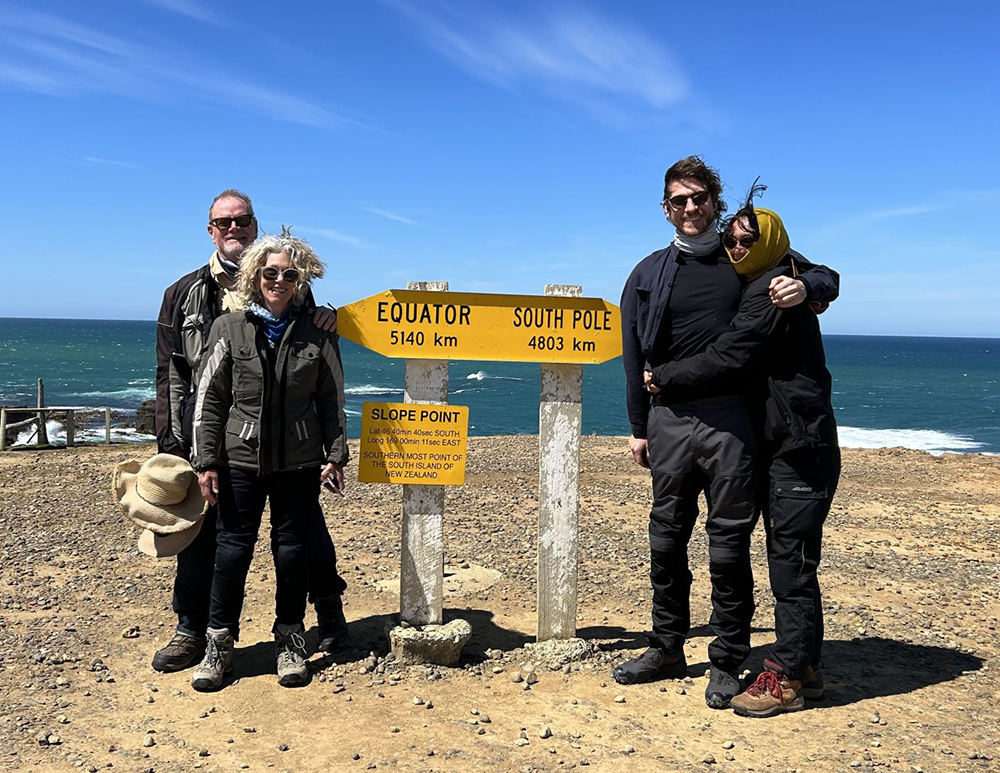I wake up just after dawn to the sound of rain lashing down on the little mountain village of Arthur’s Pass. Just two hours away from the coastal city of Christchurch, this saddle lies 920m above sea level in the heart of New Zealand’s mighty Southern Alps.
The gusting mountain deluge is as brutal as any winter storm in Australia, although it’s February, the height of New Zealand’s summer. Later that day I will be in Christchurch picking up a hired BMW R 1200 GS for a week riding to the Burt Munro Challenge in Invercargill, on the southern tip of the South Island.

As the morning progresses, motorcyclists heading to ‘the Burt’ stream through Arthur’s Pass as the West Coast highway has been cut by flooding. Many of them stop at the general store, some of them tipping the water out of their boots before entering the café.
I’m reminded of the time many years ago when I was sitting in a café at Whakatane sheltering from the rain and wondering aloud if it was worth the effort to ride a borrowed Ducati Multistrada around North Island’s remote East Cape.
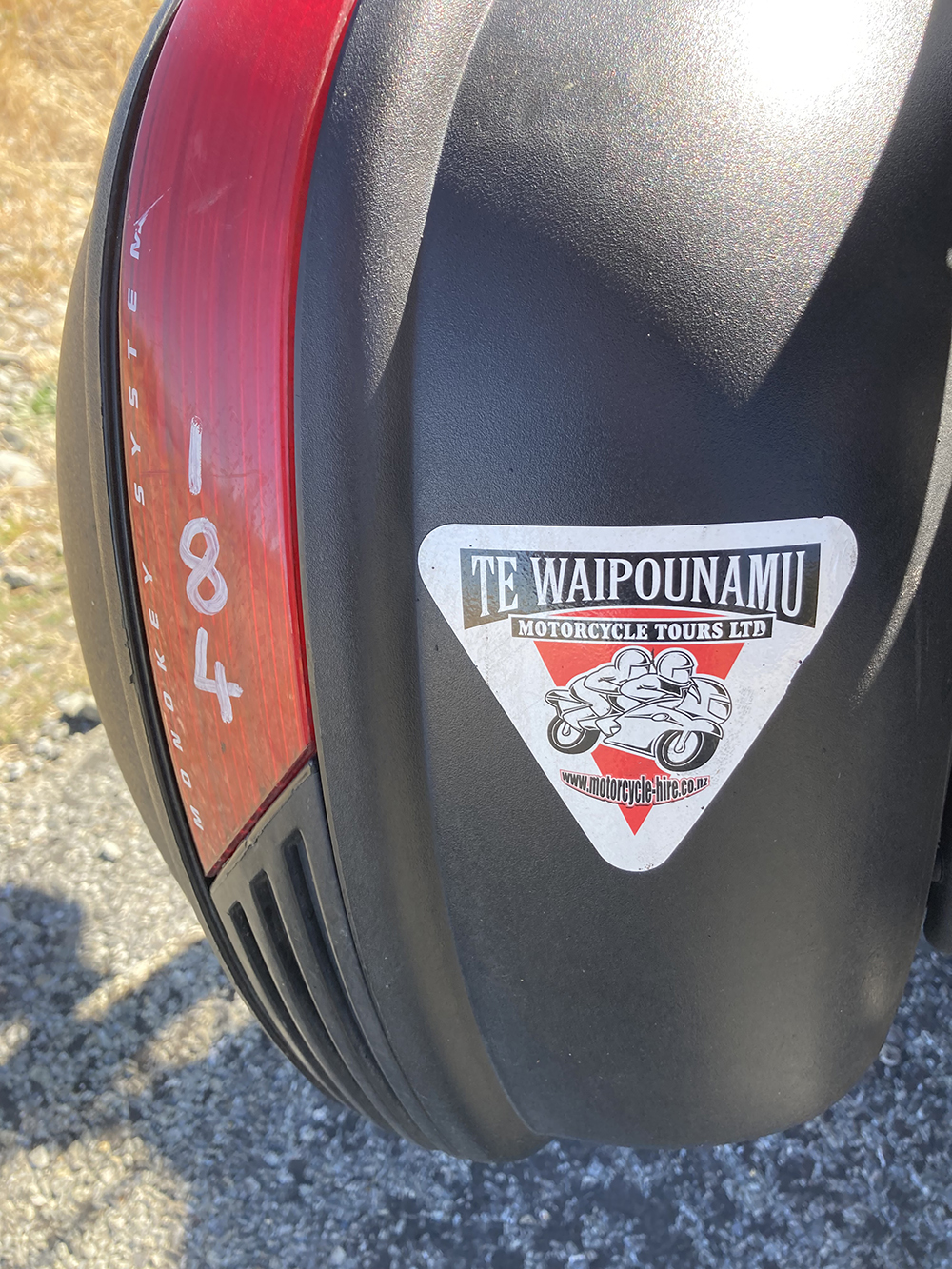
“Just keep riding,” the waitress told me. “You’re in Kiwiland; you never know what the weather will be like until you get around the next bend.” And so it is again this time. As we descend to the Canterbury Plains the weather clears. By the time we hit Christchurch, it’s clear blue skies and a baking 24ºC. The flooding rain will continue on the West Coast for the next few days. But on the eastern side of this great mountain range the weather stays perfect for touring on motorcycles.
With my wife Helen as pillion, I’ve ridden BMW adventure bikes in three-week loops around regions as diverse as South Africa and south-east Europe’s Balkan Peninsula. My bike of choice is the F 800 GS, which I prefer to the larger GS models because of its 21-inch front wheel and lighter overall weight and size.

Helen and I have ridden on these group tours through furnace-like heat, torrential rain, down fog-shrouded mountain passes with hairpin corners coated in truck diesel, along muddy and dangerously potholed forestry tracks and through gridlocked city traffic.
Most of the other riders in these tour groups have opted for the larger GS Boxers. They are an aspirational model and if you are on a bucket-list tour, why not? I have ridden many 1150/1200/1250 GS and they can be a handful in extreme off-road conditions, but in reality, a lot of adventure bike touring takes place on the tarmac.
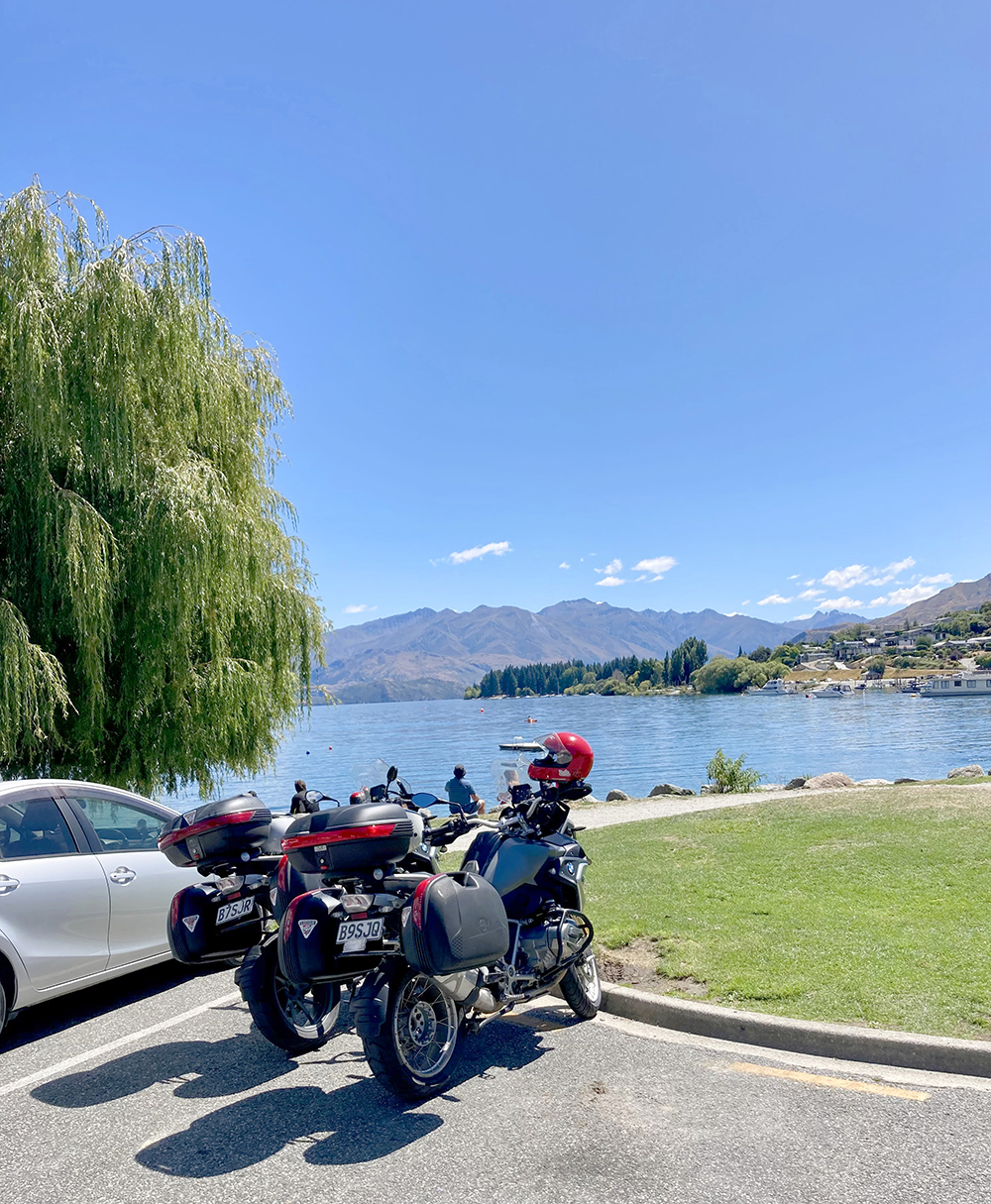
And so it is on this trip: an autobahn cruiser with off-road ability. And that off-road capability can come in very handy when conditions get extreme, either from weather or road surface. With our son Callum and his fiancee Cara as pillion, we pick a couple of bikes up from Te Waipounamu Motorcycle Tours Ltd, New Zealand’s largest and oldest tour-hire company.
After a thorough run-through of the various controls we load up and head out to the Canterbury Plains on an easy two-hour afternoon ride to our first overnight stop at Geraldine. Half an hour into the ride high winds sweep across the flat farmlands. The Canterbury Plains are well known for interacting gusts that collide from the north-east and south-west. That’s why there is a system of tall trees pruned into massive wind breaks around paddocks as far as the eye can see.

As we ride from one wind break to the next we have the bikes leaned over as if cornering. It reminds me of the time I rode on an outback highway for several hours on a BMW R 1150 GS in conditions like this – and when I stopped, realised I’d worn away the left edge of my rear tyre.
A planned stop at the Waimakariri River lookout is abandoned as choking dust clouds rise out of the valley, so we press on.

Geraldine has a pleasant, almost English country market town feel to it. It has a strong arts and crafts culture, a cinema and a supermarket which sells an amazing array of gourmet products. There is little evidence of the old classic Kiwi ‘mutton and three veg’ here. Small country towns certainly have a different dynamic from the last time I travelled around in this part of the South Island.
The next day the ride starts in earnest as we head up to Tekapo, another easy couple of hours in the saddle with the plan to arrive early arvo for a dip in its hot springs.
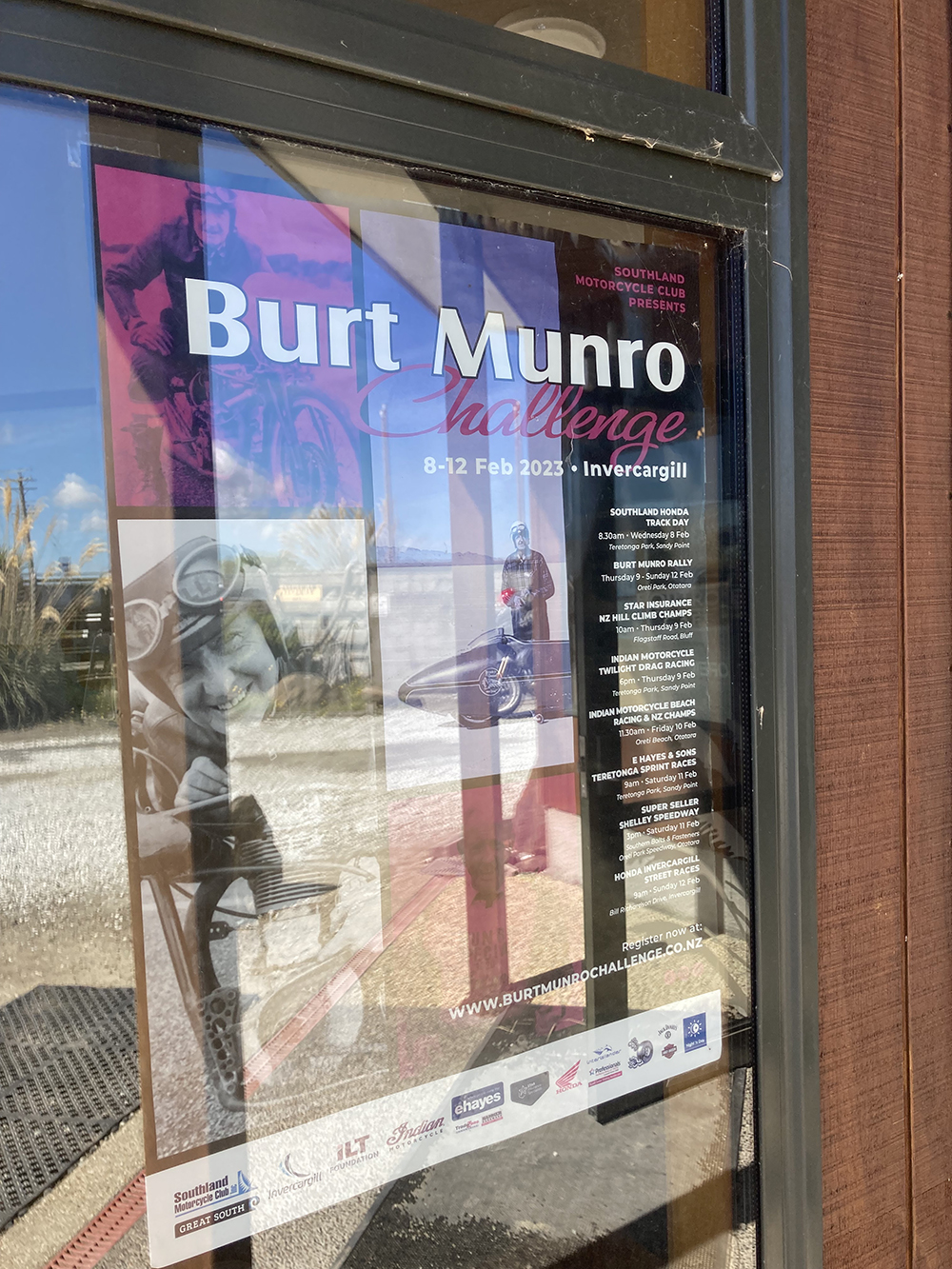
The first stop is the world famous Fairlie Bakehouse. We’re talking about such delicacies as a pork belly and apple pie with crackling on top. Fairlie is the start of the legendary Mackenzie Country, a jumping-off point for a prime hunting, fishing, hiking area of the South Island. However, this morning it’s filling up with motorcycles, not outdoor adventurers in 4WDs.
Full of pies we ride a few kays to the quirky High Country Motorcycles on the Fairlie-Tekapo Road, before we aim for a breathtaking range of big mountains with snow-capped peaks, even in summer. The atmosphere changes from the dry, hot breeze of the plains to a crisp mountain air. The road changes from unrelenting long straights to beautifully cambered sweeping corners with grippy tarmac.
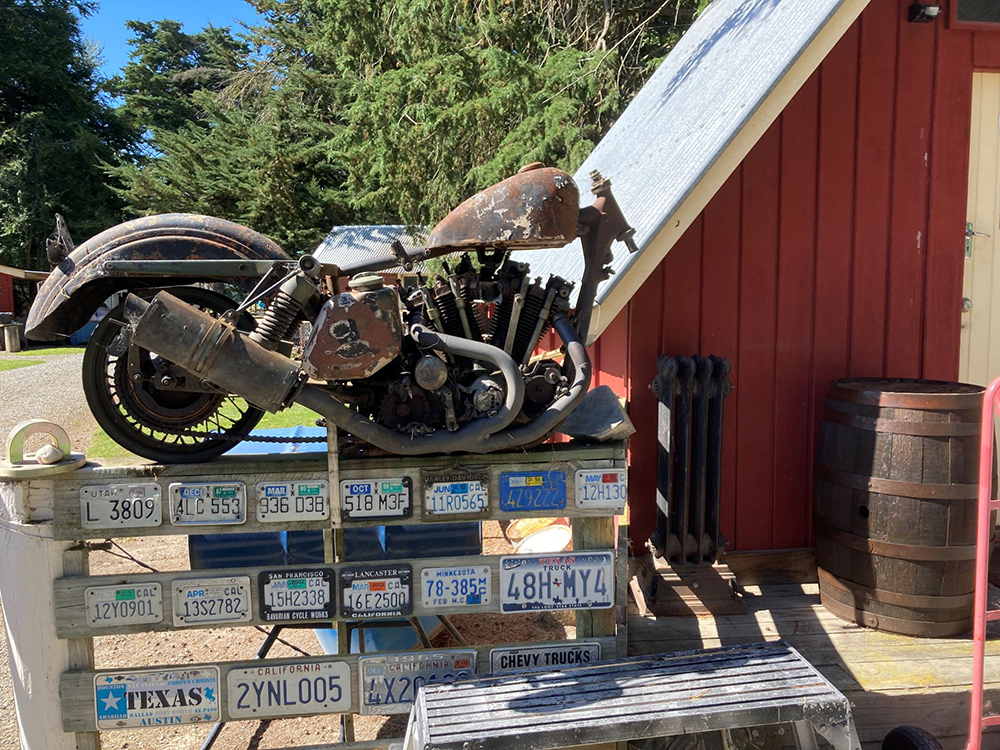
Just when you don’t want such an involving ride to end the shimmering blue water of Lake Tekapo appears and takes your breath away. The turquoise colour is created by rocks ground down to a flour-like consistency by ancient glaciers with this paste now suspended in the water.
Tekapo Springs is a sprawling complex of thermal pools, plunge pools, day spa, saunas and café and must be even more amazing to experience in winter when the area is blanketed in snow. The township has boomed over the past 10 years or so, especially since it created its dark sky reserve – one of the world’s best places for stargazing.
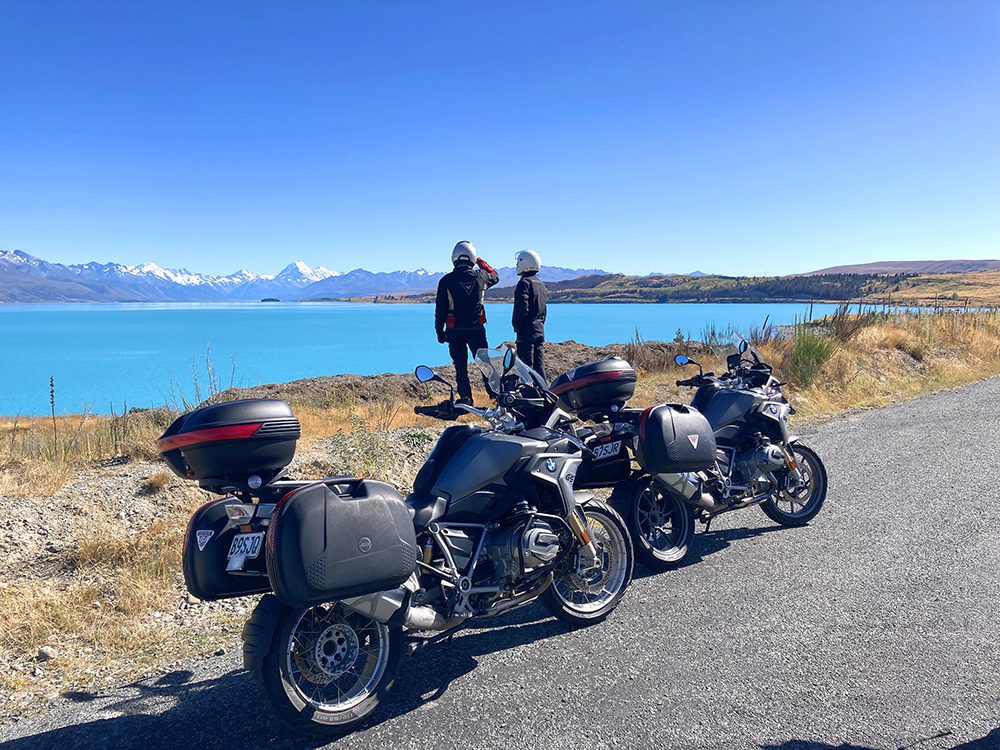
Day three sees us heading to Queenstown via the Lindis Pass and Wanaka. We skirt the edges of Lake Pukaki, which covers 179km2 and is part of New Zealand’s massive hydro-electric power scheme with all the other infrastructure that involves.
Back to reality and Lindis Pass, which links the Mackenzie Country with Central Otago in an alpine region of dry tussock-covered hills, valleys and plateau. The way through, first shown to early European settlers by local Maori who used it as a trading route, is now the ultimate motorcycle road. But that’s in summer: in autumn and spring beware of black ice.

Largely devoid of traffic this day, it feels like I’m riding in Scotland’s highlands. And that’s the magic of the South Island. It packs a lot of the world’s scenery into a small melting pot spiced up with some of the world’s best motorcycle roads.
We stop at the quaint little village of Tarras for a coffee break. We’re now just 30 minutes from Wanaka. Suddenly we hear a powerful rumble like a fleet of those piston-engine planes on show at Wanaka’s Warbirds and Wheels museum.
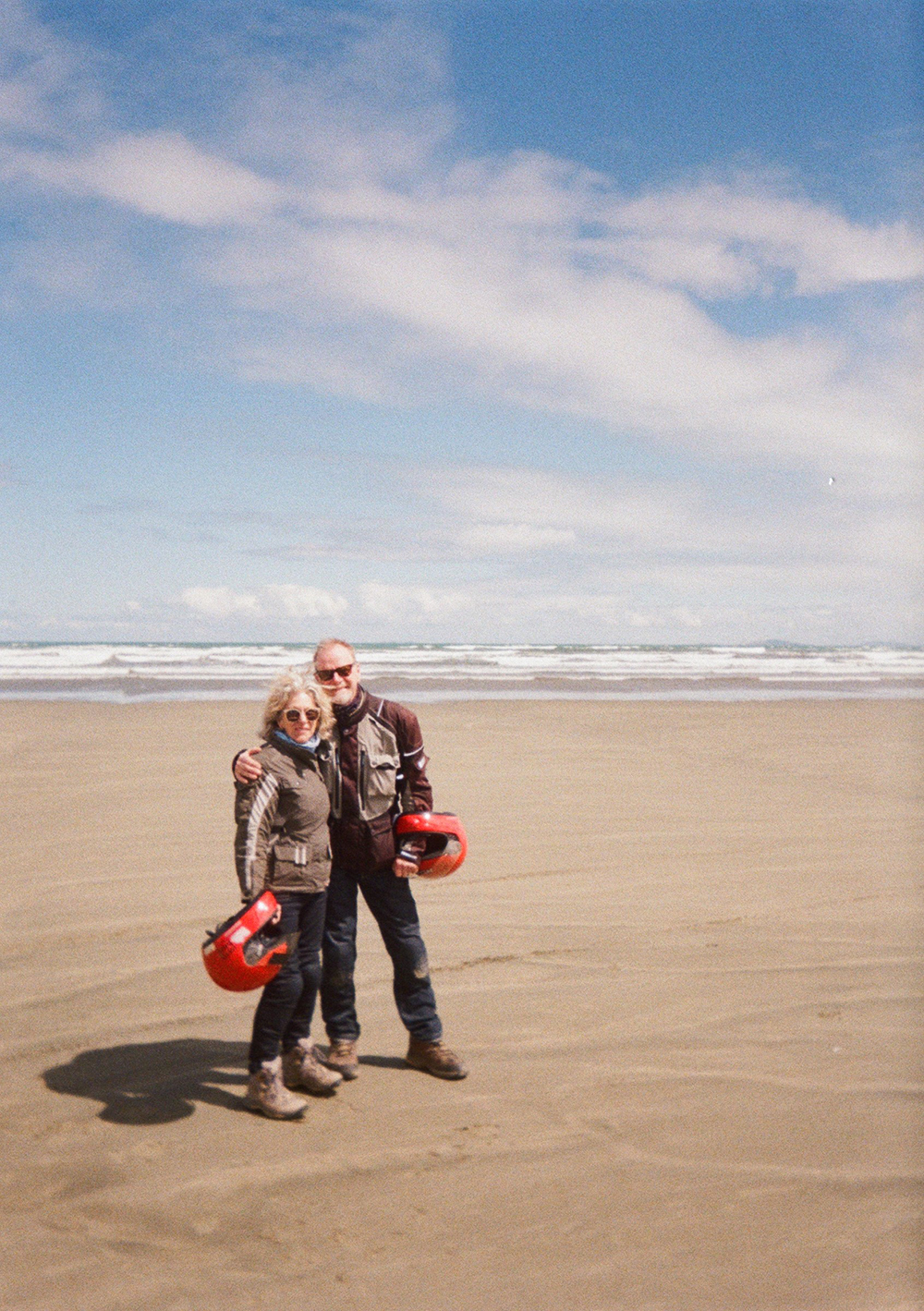
The source of the rolling thunder is 30-plus bikies from Auckland on stripped-down Harley-Davidson V-Rods with apehangers and open exhausts belting along at 100km/h with a police escort. Their presence Down South has been making media headlines for the past week or so.
After lunch on the banks of Lake Wanaka we head to Queenstown on the famous Crown Range Route via an hour-long diversion to the famous gold mining village of Arrowtown.
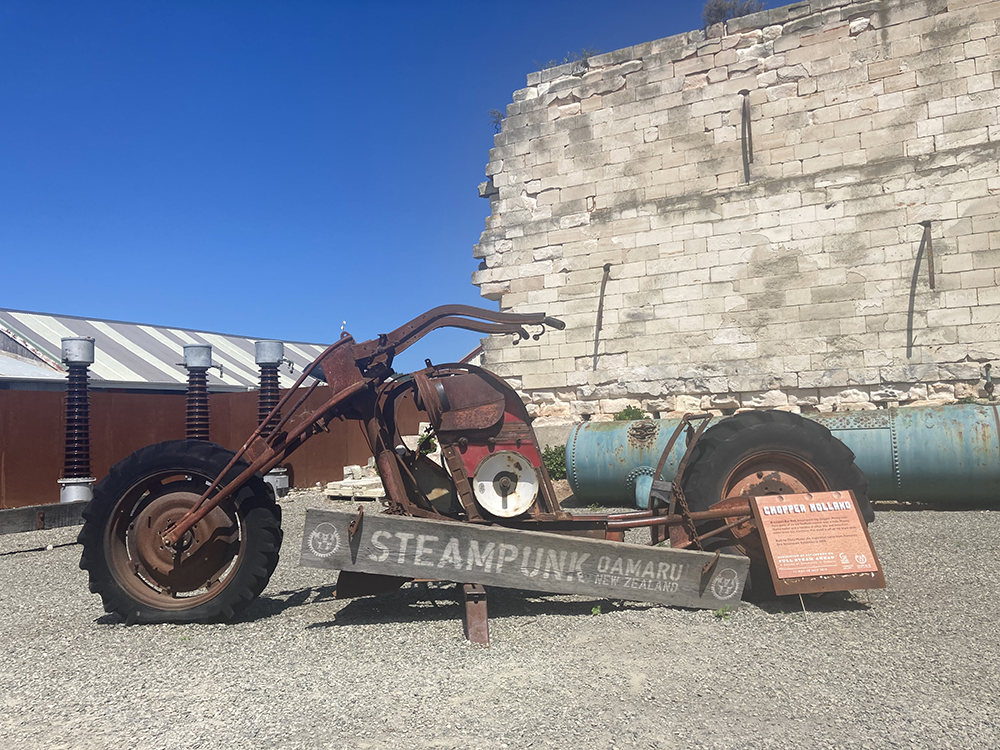
The last time I was here suburban expansion was just starting to get serious. The result is one of the fastest growing populations in New Zealand with steep hillsides carved out for expensive subdivisions and traffic so gridlocked we have to lane-split to get from one side of the small city to the other. It’s like a New Age goldrush that replicates the first one 150 years ago.
Day four will be a varied ride from Queenstown along Lake Wakatipu and into the farming country of Southland to Invercargill.
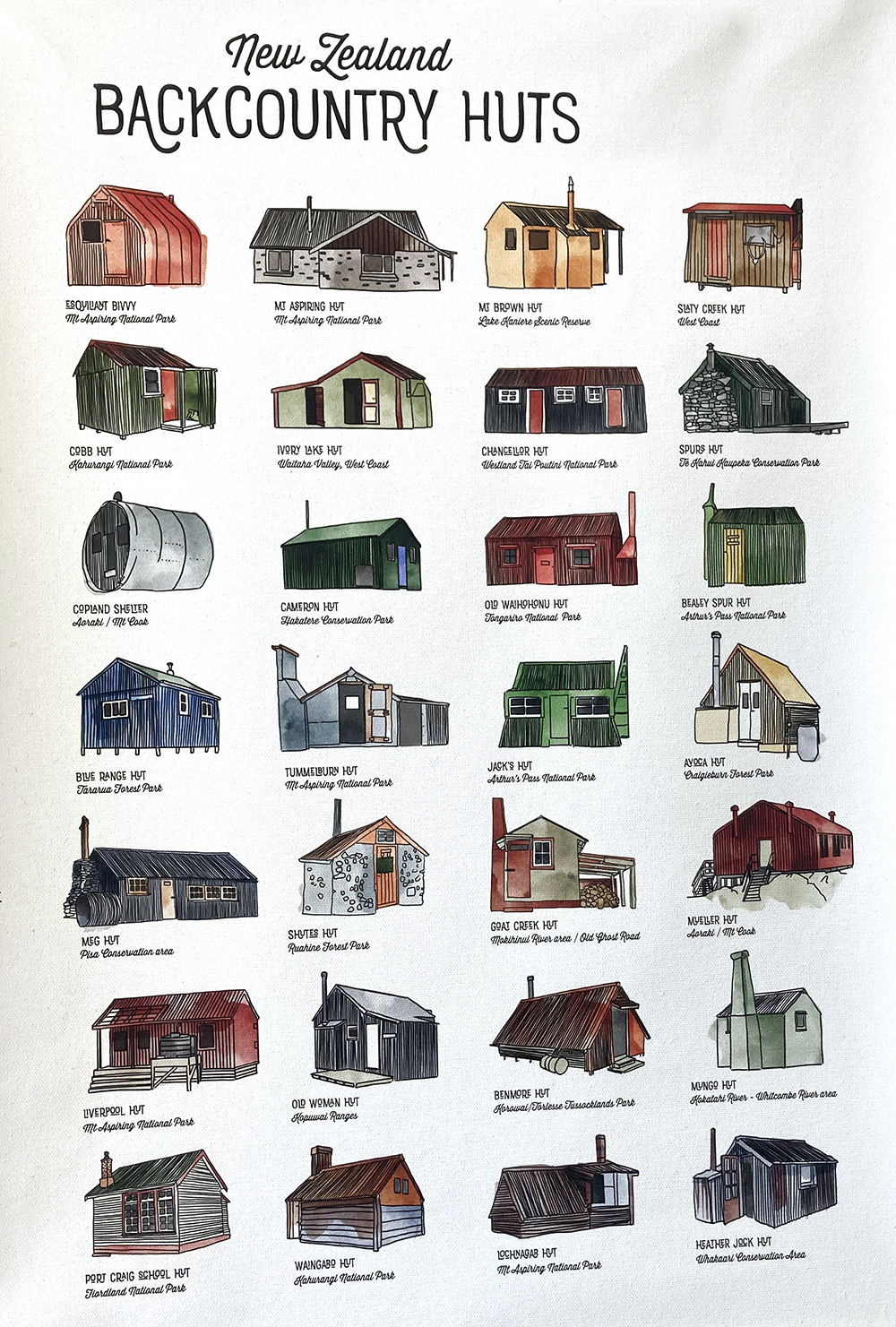
The first part is just like riding along a Scottish loch, which I did for the first time in 1989 on a hired Honda VT500 in a convoluted route to the Isle of Man TT. The mountains rise into the clouds on an overcast morning in exactly the same way, with tiny settlements hugging the shoreline. Little wonder the area around Glenorchy, on the south-west part of the lake, played a prominent role in The Lord of the Rings film trilogy.
Out into Southland’s pastoral flats we take a mid-morning break at Roar Coffee in Lumsden, a typical Kiwi country town that caters to locals as much as the passing parade of tourists, hunters, fishers and mountain bike riders. Someone there has a sense of humour, naming a local bar Route 6.
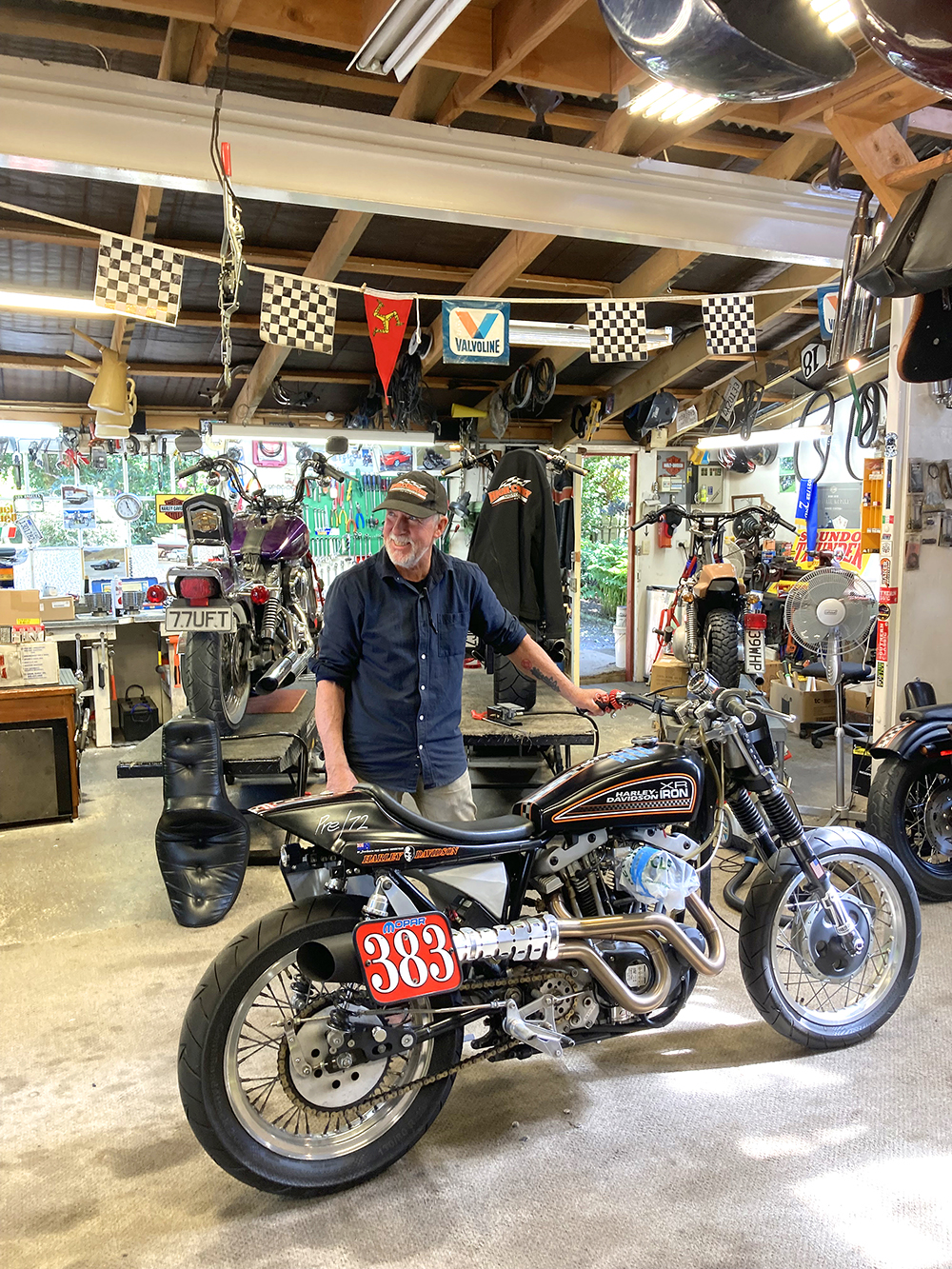
As we approach Invercargill the road starts filling up with motorcyclists heading to New Zealand’s biggest annual festival.
As we pull up in the main street several passersby ask us where we came from and what we think of it all. Well, it’s obvious Invercargill is on the move. The central business district is undergoing a multi-million-dollar transformation, largely financed by the Richardson family, which owns and operates Classic Motorcycle Mecca and Bill Richardson Transport World museums.
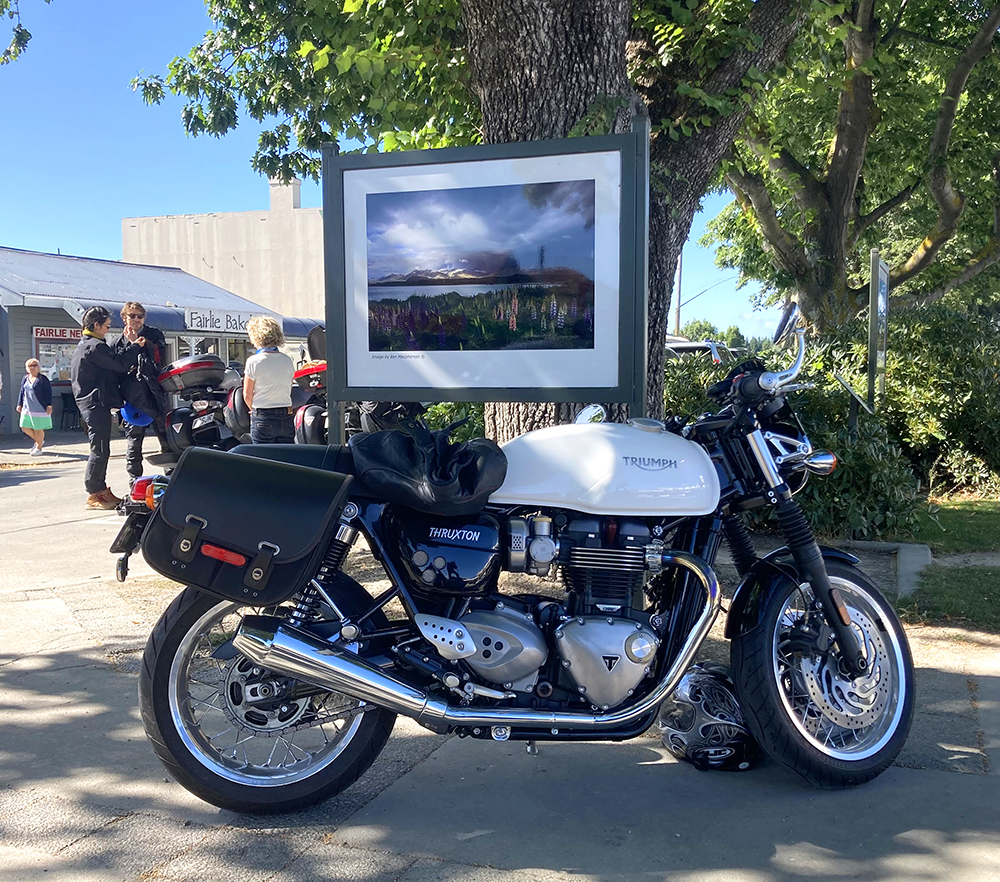
With time limited to two half days at the Burt, we attend the end of the beach racing, look around Motorcycle Mecca and, the next morning, take in a few hours of the historic motorcycle races at Teretonga, the world’s most southerly FIA-compliant circuit.
It feels pretty special standing on the sands that Burt Munro competed on all those decades ago. Teretonga is also a memorable experience, being New Zealand’s oldest permanent racetrack.

We now head off into a little-known region called the Catlins. This involves leaving the main highway north to Dunedin to follow the more north-eastern Southern Scenic Route.
Once it was mainly gravel but over the past 10 years most of it has been sealed but deliberately aligned with slow corners to stop it becoming a “100km/h highway”, to quote officials.

The highlights are a picnic lunch in a paddock before a brisk walk in blustery conditions across farmland to Slope Point, the South Island’s most southerly point. A bit farther up the road to Curio Bay, with its 180-million-year-old petrified forest remains, becomes a test of proper off-road riding.
A floodway that reaches for kilometres through marshland is ankle-deep in freshly laid gravel with stones the size of golf balls. It’s a case of keep the throttle open, don’t let the front-end tuck, and try and ignore the sensation of skating on marbles. We survive, feeling a bit like the Super Blackbird rider who has parked up to catch his breath.
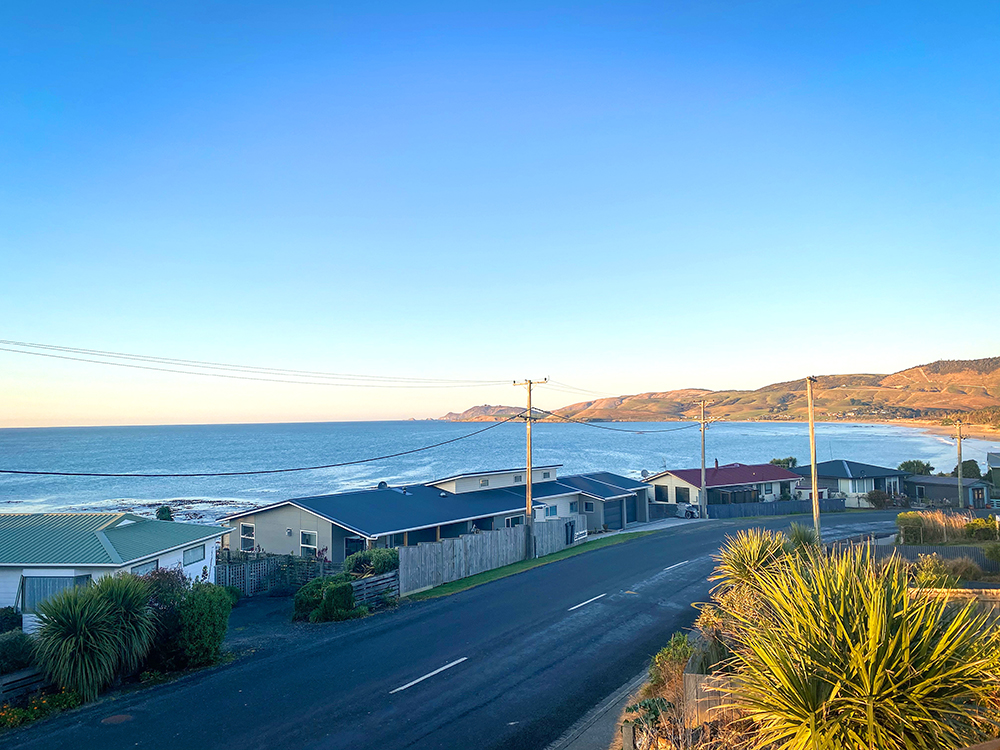
Back on the bikes we ride through valleys dominated by huge and ancient Rimu, Matai, Totara and Kahikatea trees. Threaded through this magnificent wilderness is a winding, undulating road that every motorcyclist dreams of riding.
At another break, an easy 10-minute walk to the Purakaunui Falls takes us deep into this primeval forest, with its musty smells and sound of water rushing down to what Kiwis call a “bridal waterfall”. Our last overnight stay is at Kaka Point, 4km from the famous Nugget Point lighthouse.

Still a secluded holiday destination with a long sandy beach it is slowly going through a transition of development since the Covid pandemic with more full-time, work-from-home residents swelling its population to over 300.
The final day of our ride is a long one. North to Dunedin, where massive roadworks divert us from the city, up the coast to Christchurch. A mid-afternoon stop at Oamaru’s Steampunk HQ is a welcome relief from a manic main highway. Located in a heritage-preserved waterfront precinct similar to Sydney’s Rocks district, the museum is a bit Mad Max, a bit Back to the Future, a brilliant diversion.

Back in Christchurch that evening as I board the plane, I’m already thinking about how I will return to this motorcycle mecca.
Words Hamish Cooper + photography Callum Cooper, Cara Stewart & HC
